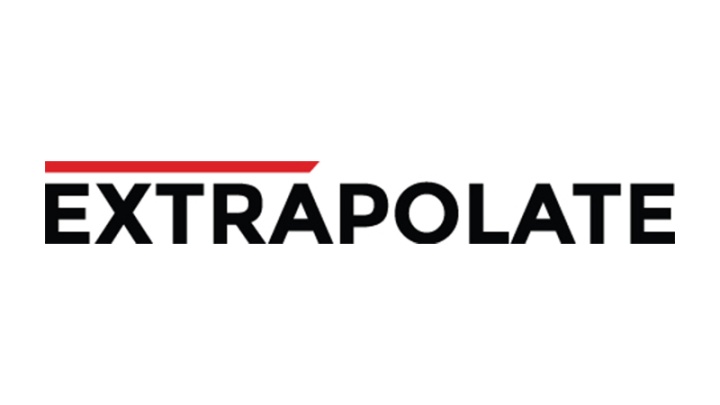A new market analysis reveals consistent expansion for the global Blood Pressure Monitoring Devices Market. Valued at USD 2.75 billion in 2023 and projected to grow from USD 2.95 billion in 2024 to a significant USD 4.44 billion by 2031, the market is set to exhibit a Compound Annual Growth Rate (CAGR) of 6.0% during the forecast period. This steady growth is primarily driven by the escalating global burden of hypertension and cardiovascular diseases, increasing consumer awareness regarding health monitoring, the shift towards home healthcare, and continuous technological advancements, particularly in digital and wearable devices.
Read Complete Report Details: https://www.extrapolate.com/Healthcare-Medical-Devices-Biotechnology/blood-pressure-monitoring-devices-market/26055
Report Highlights
The comprehensive report analyzes the global Blood Pressure Monitoring Devices Market, segmenting it by Product Type (Manual Blood Pressure Monitors, Digital Blood Pressure Monitors, Ambulatory Blood Pressure Monitors, Wearable Blood Pressure Monitors), by Application (Health Monitoring, Clinical Settings, Home Healthcare, Sports and Fitness, Others), by End User (Hospitals and Clinics, Home Care, Ambulatory Surgical Centers, Others), and Regional Analysis. This detailed segmentation provides valuable insights into the market's dynamics and emerging trends.
Key Market Drivers
- Rising Prevalence of Hypertension and Cardiovascular Diseases: The increasing global incidence of hypertension (high blood pressure) and related cardiovascular diseases (like heart attack and stroke) is the most significant driver. As these conditions become more widespread, the demand for accurate and convenient monitoring devices for early detection, diagnosis, and management intensifies.
- Growing Health Consciousness and Preventive Healthcare: There's a heightened awareness among consumers about the importance of regular health check-ups and proactive disease management. This prompts individuals to purchase and utilize home-based blood pressure monitors for routine monitoring and self-management of their health.
- Shift Towards Home Healthcare and Remote Patient Monitoring (RPM): The trend of patients preferring to monitor their health from the comfort of their homes, coupled with the increasing adoption of telehealth and RPM solutions, is significantly boosting the market. Home monitoring reduces the burden on clinical settings and provides valuable data for healthcare providers.
- Technological Advancements in Devices: Continuous innovation in blood pressure monitoring devices, including the development of user-friendly digital monitors with automatic inflation/deflation, memory functions, wireless connectivity (Bluetooth, Wi-Fi), and integration with smartphone apps, enhances ease of use, data accuracy, and patient convenience.
- Aging Global Population: The global geriatric population is rapidly expanding, and older individuals are more susceptible to hypertension and other chronic conditions requiring regular blood pressure monitoring. This demographic shift is a major driver for market growth.
- Increasing Adoption of Wearable Technology: The emergence and growing popularity of wearable devices (smartwatches, patches) capable of continuous or frequent blood pressure measurement, albeit with ongoing validation challenges for medical accuracy, are contributing to market expansion, especially in the health monitoring and sports/fitness segments.
Key Market Trends
- Digital Blood Pressure Monitors to Dominate: The "Digital Blood Pressure Monitors" segment is expected to continue holding the largest market share and exhibit strong growth. Their ease of use, accuracy, and digital display make them highly popular for both home and clinical settings.
- Home Healthcare as a Leading Application and End-User Segment: The "Home Healthcare" application and "Home Care" end-user segments are projected to be the fastest-growing. This is driven by patient preference for convenience, cost-effectiveness, and the increasing availability of reliable and user-friendly home monitoring devices.
- Wearable Blood Pressure Monitors: A High-Growth Niche: While still a smaller segment, "Wearable Blood Pressure Monitors" are anticipated to exhibit the highest CAGR. As technology improves (especially for cuffless solutions) and regulatory approvals increase, their convenience for continuous or frequent monitoring will drive significant adoption among health-conscious individuals and for remote patient monitoring.
- Integration with Smart Devices and Health Apps: A prominent trend is the integration of blood pressure monitors with smartphones and health applications. This allows for seamless data syncing, historical tracking, trend analysis, and sharing of data with healthcare providers, enabling more personalized and proactive health management.
- Ambulatory Blood Pressure Monitors (ABPM) for Clinical Accuracy: The "Ambulatory Blood Pressure Monitors" segment will see steady growth, particularly in clinical settings, as ABPM offers more comprehensive data on blood pressure fluctuations over a 24-hour period, helping diagnose "white-coat hypertension" and "masked hypertension."
- Focus on Accuracy and Clinical Validation: Manufacturers are increasingly emphasizing the clinical validation and accuracy of their devices to build trust among both consumers and healthcare professionals. Regulatory bodies are also tightening standards, particularly for innovative wearable solutions.
- Telehealth and Remote Monitoring: The widespread adoption of telehealth services is further accelerating the demand for connected blood pressure monitors that can seamlessly transmit data to healthcare providers for remote consultations and monitoring, especially for chronic disease management.
- Asia-Pacific as a Key Growth Region: The Asia-Pacific region is projected to exhibit significant growth and may eventually become the largest market. This is due to its large and aging population, increasing disposable incomes, rising prevalence of hypertension, improving healthcare infrastructure, and growing health awareness in countries like China and India. North America currently holds a substantial market share due to its advanced healthcare infrastructure and high awareness levels.
Key Challenges
- Accuracy and Calibration Concerns: Ensuring the consistent accuracy and proper calibration of home-use and especially wearable devices remains a challenge, as incorrect readings can lead to misdiagnosis or inappropriate treatment.
- Lack of Awareness in Developing Regions: Despite the increasing prevalence of hypertension, a lack of awareness regarding its risks and the benefits of regular monitoring can hinder adoption in some developing regions.
- High Cost of Advanced Devices: While basic digital monitors are affordable, advanced devices with smart features and connectivity can be expensive, limiting their accessibility for certain consumer segments.
- Data Privacy and Security: The transmission of sensitive health data from connected devices raises concerns about data privacy and cybersecurity, requiring robust protection measures.
Key Players in the Global Blood Pressure Monitoring Devices Market:
The global Blood Pressure Monitoring Devices Market is competitive, with a mix of established medical device manufacturers and companies focusing on health technology. Some of the prominent players shaping the market include:
- Omron Healthcare, Inc.
- A&D Company, Limited
- Koninklijke Philips N.V.
- Hill-Rom Holdings, Inc. (now part of Baxter International Inc. and includes Welch Allyn)
- GE Healthcare
- Masimo Corporation
- Nihon Kohden Corporation
- SunTech Medical, Inc.
- Spacelabs Healthcare (a division of OSI Systems, Inc.)
- Withings
- Microlife AG
- Rossmax International Ltd.
- Biobeat
- Aktiia SA
- Caretaker Medical
These companies are actively investing in R&D to enhance device accuracy, develop innovative wearable and cuffless solutions, improve connectivity features, and expand their distribution networks to meet the growing global demand for blood pressure monitoring devices.
This report offers a strategic overview of the global Blood Pressure Monitoring Devices Market, providing valuable insights for medical device manufacturers, healthcare providers, retail pharmacies, e-commerce platforms, technology developers, and investors seeking to capitalize on the increasing emphasis on cardiovascular health and remote patient monitoring.


